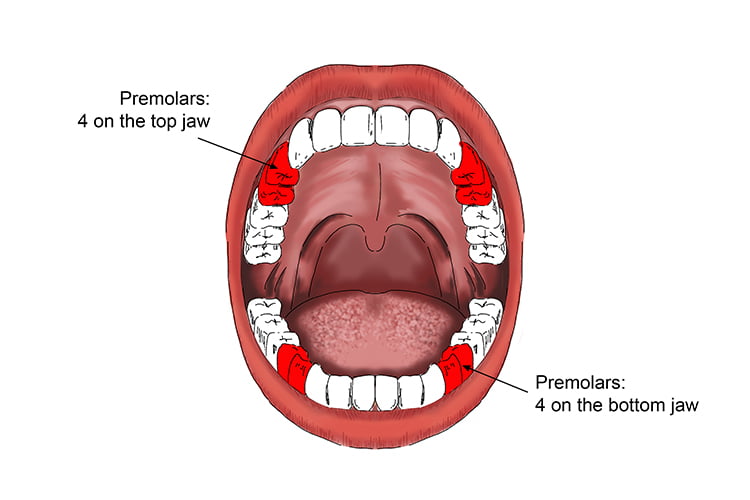Hey there! Are you ready for some fascinating facts? Let’s talk about our teeth! Did you know that teeth are the strongest parts of our body? They help us chew and break down our food into four different types. Each has a unique shape and function. It’s like a team working together. The incisors, canines, premolars, and molars all play a crucial role in helping us bite, chew, and grind our food perfectly.
But that’s not all! Teeth are not just a single-layer structure. They have several layers, each with a vital job to do. Enamel is like a shield that protects our teeth from damage. Dentin, on the other hand, sits below the enamel and is softer. The pulp is the innermost layer that contains nerves and blood vessels. Finally, cementum is the layer that covers the root of the tooth and is located beneath the gums.
So, the next time you take a bite of your favorite food, remember your teeth work hard to keep you healthy and strong, and they deserve your appreciation and care.
ANATOMY OF TEETH:
A tooth consists of two main structures:
- Crown: It is the part of your tooth you can see when you smile. This visible part is covered with a strong layer called enamel. It is a kind of protective shield that keeps your tooth safe from things like chewing and biting.
- Root: It is the hidden part of the tooth beneath the surface. The root keeps your tooth firmly in place in your jawbone. Even though you can’t see it because your gums cover it up, the root is like the anchor of your tooth. It connects to a soft tissue called the periodontal ligament. It’s like a cushion that holds your tooth in its socket. This allows you to bite and chew without any hassle.
TYPES OF HUMAN TEETH
Human adults have a total of 32 teeth, known as permanent or secondary teeth, whereas children usually have 20 milk teeth, also called primary teeth. The eruption of a baby’s first milk teeth typically occurs between 6 to 12 months, and by the age of 21, adults have all their permanent teeth.
1. INCISORS
They are often referred to as “Cutting Teeth,” located at the front of the dental arch, with four in the upper jaw and four in the lower jaw. Shaped like small chisels, incisors play a crucial role in the mastication process and aid in biting and breaking down food.
2. CANINES OR CUSPIDS
They are positioned next to the incisors, with two in the upper and two in the lower jaw. Canines are designed for ripping and tearing tough foods, particularly meats.
3. PREMOLARS
They are also known as Bicuspids and are situated behind the canines towards the back of the mouth. With a total of eight (two on each side of the upper and lower jaw), premolars crush food before it reaches the molars. Their morphology combines characteristics of both canines and molars.
4. MOLARS
These are the largest and strongest among all teeth types, total 12 and are located at the back of the dental arch. Their extensive surface area facilitates the grinding of food into smaller pieces. This makes it easier to swallow. Additionally, molars include four wisdom teeth, the last set to erupt in human adults, typically between the ages of 17 to 21. In some cases, lack of space may result in impacted wisdom teeth that sometimes lead to their removal.
All four types of teeth are intricately designed to make the chewing process smooth and effortless. This ultimately contributes to overall health and well-being.
HOW TO TAKE CARE OF YOUR TEETH?
Maintaining healthy teeth is all about good oral care. Here are some simple tips that you need to follow:
- See your dentist regularly: Schedule check-ups and cleanings to keep your teeth in top shape.
- Brush your teeth twice a day: Spend at least 2 minutes using a soft-bristle toothbrush and fluoride toothpaste.
- Floss daily: Clean between your teeth once a day to remove plaque and prevent cavities.
- Use mouthwash: Opt for an alcohol-free, antibacterial mouthwash to keep your breath fresh and kill harmful bacteria.
These habits can go a long way in keeping your teeth and gums healthy.
WRAPPING UP
Our teeth play a key role in the complex process of chewing and breaking down food. With their four distinct types and layers of enamel, dentin, pulp, and cementum, teeth form a resilient team working together to maintain our oral health. The crown and root together create a sturdy structure, ensuring our ability to bite and chew. Hence, it’s essential to recognize the intricate design of our dental system and show appreciation for the hard work our teeth put in daily.
Moreover, caring for our oral health is a responsibility we all share. Regular dental check-ups, proper brushing, flossing, and the use of mouthwash are simple yet powerful practices that contribute to the well-being of our teeth and gums. So, the next time you enjoy a delicious meal, remember to thank your teeth for their tireless efforts!






